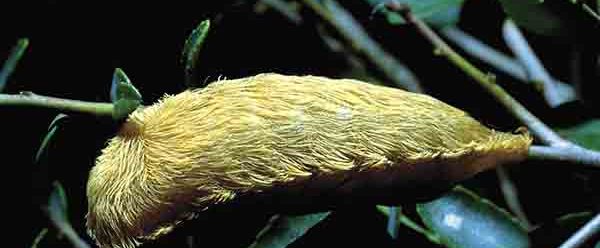Beware of Poisonous Caterpillar in Florida
Recently there have been countless news stories about a spectacular caterpillar – the puss caterpillar. Children from Florida to Virginia have been stung and the excruciating pain has been landing them in the hospital. Some of these children had actively sought out to pet the caterpillar due to its “cute” fuzzy appearance. In fact, the caterpillar gets its name due to the fact that it resembles a “fluffy house cat” or even a “tiny Persian cat.” Other children came into contact when the insect fell from a tree and landed on them.
These caterpillars are generally an inch long at the largest and are covered in a thick coat of fur that can range from greyish-white to orangey-brown to charcoal. In addition to the fur their body tapers at the end, which can give it the appearance of having a tail. The fluffy hairs that cover the puss caterpillar hide a series of tiny, venomous spines that can stick in your skin.
The feeling is said to be similar to a bee sting, except worse, and immediately starts increasing to the point where it can even “make your bones hurt.” The degree of pain depends on where you’re stung, but it has been reported to take as many as 12 hours to begin to subside. On top of the intense pain, contact with the caterpillar’s bristles can cause fever, vomiting, convulsions, rashes, swelling, abdominal distress, blisters, and even chest pain, numbness, and difficulty breathing. However, each individual reacts to a different extent – some require medical treatment and other report only a mild itching or burning.
It may seem like more and more people are being stung recently, which is partly true. Like many other insect species, the puss caterpillar populations go through a “boom-and-bust” cycle. This means that the population can increase or decrease quite dramatically as environmental conditions change. Right now these conditions appear to be ideal for the caterpillars so the population has been on the rise.
The Poison Center of Tampa recommends that you use cellophane tape over the affected area and remove repeatedly to strip the spines from your skin. In addition, you can apply ice packs to reduce the stinging sensation and follow it up with applying a paste made of baking soda and water. Oral antihistamines, calamine lotion, hydrocortisone cream, and juice from the stems of comfrey plants can also be used to treat symptoms. It is recommended to watch for the caterpillars around trees like oak, elm, and citrus. They even tend to be found around common garden plants like rose bushes or ivy. Additionally, teach children what they look like and why they need to avoid touching them since the puss caterpillar’s fluff-ball appearance can be quite appealing.

